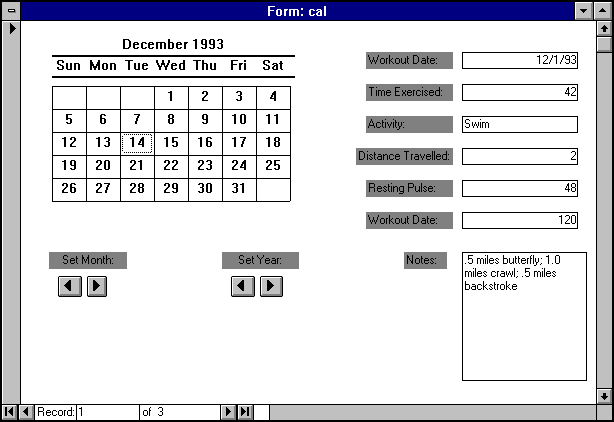
In addition to the native controls that appear in the Microsoft Access Basic toolbox, Microsoft Access 2.0 supports OLE custom controls. A custom control (like a native control) is an object that you draw on a form to enable or enhance user interaction with an application. However, unlike a native control, the code that supports the custom control is found in one or more separate libraries. In order to use a custom control, you load the appropriate libraries and, while in design mode, add the control to your application's forms.
An OLE custom control is an object with three distinct attributes: properties, events, and methods. A property is a control characteristic; some common properties are color, width, height, and font. An event is a response by a control to some outside action on that control. Some common events are click, double-click, and keystroke. A method is a function that an application calls to change the appearance, behavior, or properties of a control. The properties, events, and methods for an OLE custom control are packaged in a library that's identified by the .OCX extension.
A sample of a custom control is the OLE Calendar control supplied in the Microsoft Access Developer's Toolkit. The Calendar control displays a calendar for a particular month in a particular year.

Once you load the required libraries, you can place this control in your form.
